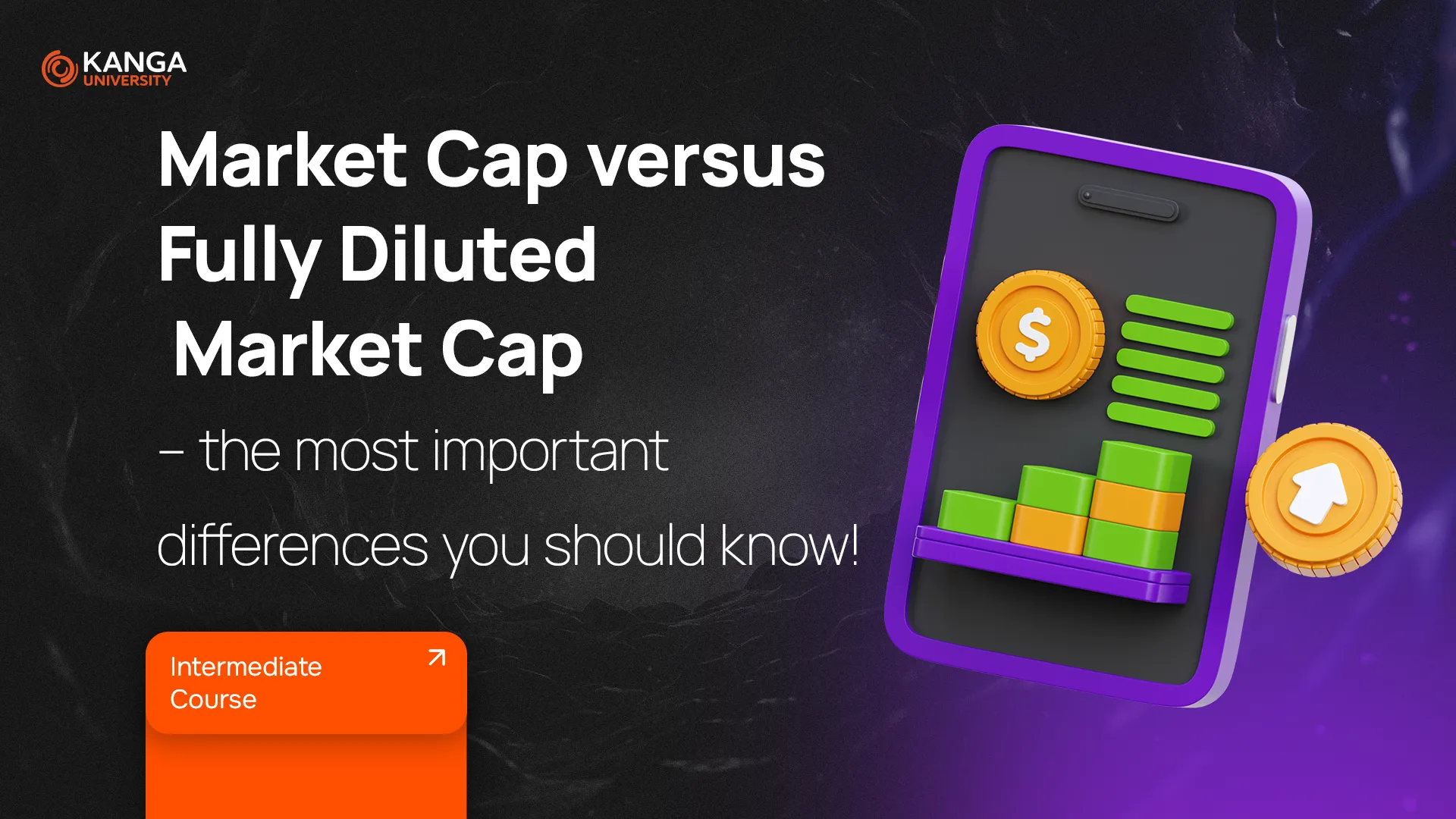
If you want to understand how much a cryptocurrency is really worth, looking at the token price alone won’t cut it. To get the full picture, you need to understand two essential metrics: Market Cap and Fully Diluted Market Cap (FDV). They may sound similar, but they show two different things – and knowing the difference can help you avoid risky investments.
In this lesson, we’ll break down what these terms mean, when they matter most, and how to use them to make smarter investment decisions.
What Is Market Cap?
Market Cap (short for market capitalization) is the total value of all tokens currently in circulation.
How to calculate it?
It’s simple:number of circulating tokens × current price of one token.
This metric isn’t exclusive to crypto – it’s also used in traditional finance to value companies. In the crypto space, Market Cap is often used to rank projects by size and popularity. The higher the Market Cap, the more recognized and (in theory) stable the project seems.
Why does it matter?
Because it gives you a quick sense of a project’s scale. If a token has a high Market Cap, it means many people have already invested in it – which could mean more trust and less volatility. But don’t take it at face value: high Market Cap doesn’t always mean low risk.
What Is Fully Diluted Market Cap (FDV)?
FDV is a projection of a project’s value if all of its possible tokens were already in circulation – and priced at today’s rate.
How to calculate it?maximum possible supply × current price of one token.
FDV helps you understand the future potential size of a project – but also its future risks. If FDV is much higher than the current Market Cap, it could mean that a lot of new tokens will eventually enter the market. And when supply goes up without matching demand, prices usually go down.
Market Cap vs. FDV – What’s the Difference?
| Feature | Market Cap | Fully Diluted Market Cap (FDV) |
|---|---|---|
| What does it show? | Value of current circulating tokens | Value if all tokens were in circulation |
| Includes future token supply? | No | Yes |
| What it tells you | Current market position | Future scale and potential inflation |
| Main risk | Doesn’t warn about future supply shocks | May signal overvaluation or price pressure |
Quick tip:
If FDV is 8 to 10 times higher than Market Cap, take a closer look. That gap might mean the project is planning to release many new tokens, which could dilute value.
When Should a High FDV Worry You?
Not every project with a high FDV is a red flag. But in some cases, it should definitely make you pause.
1. Inflationary tokenomics
If the project plans to release a large number of new tokens over time, the value of existing tokens may drop. That’s what happened to TryHards (TRY) – the token lost most of its value shortly after additional supply was released.
2. Selling pressure
A high FDV can make investors nervous. If they think the token is overvalued, they might start selling, leading to a domino effect that pushes the price even lower.
Is FDV a Reliable Metric?
FDV won’t tell you if a project is “good” or “bad.” But it’s useful for:
-Spotting inflation risks
-Understanding future token supply
-Putting today’s price in context
Just don’t rely on it alone.
You should always also consider:
-
The project’s tokenomics (who gets tokens and when),
-
Vesting schedules (when tokens are unlocked),
-
Use cases for the token (is it useful or just speculative?).
Summary
Market Cap and FDV give you two views of the same project:
-
One tells you what it’s worth now.
-
The other shows what it could be worth – or how risky it might become.
Understanding both metrics is essential if you want to make smart, long-term crypto decisions. A high FDV can signal risk, but it’s not always a dealbreaker. Likewise, a high Market Cap doesn’t guarantee safety. What really matters is context – and taking the time to understand how a project works.